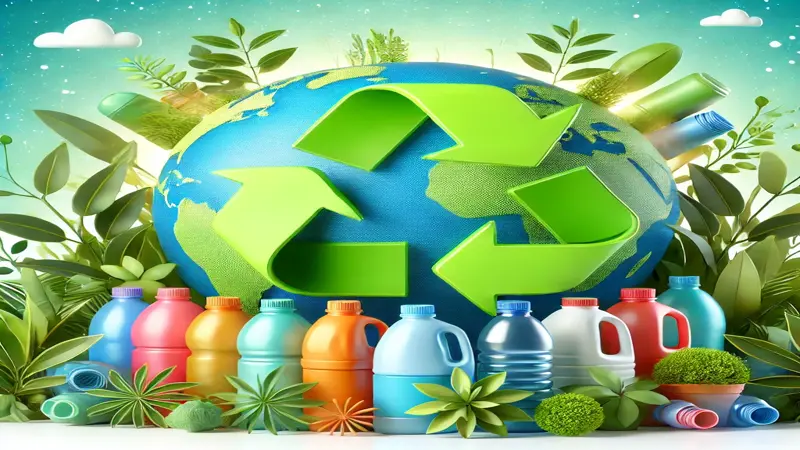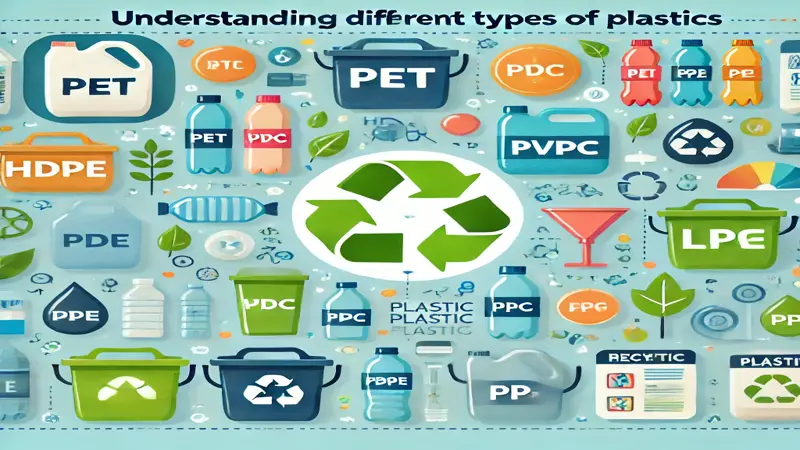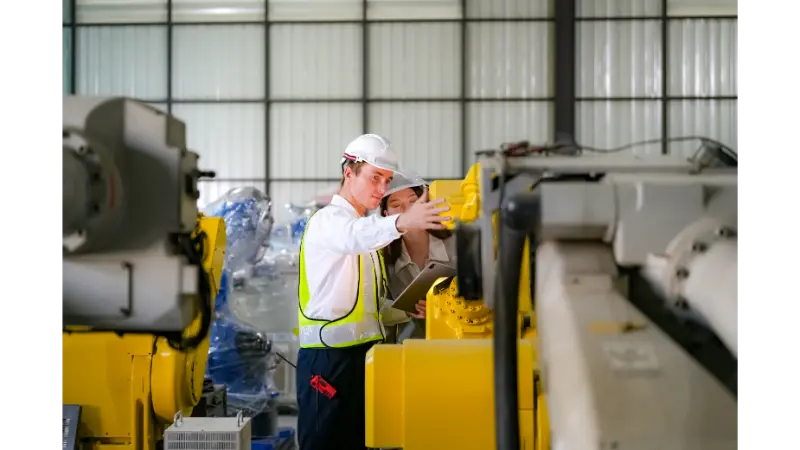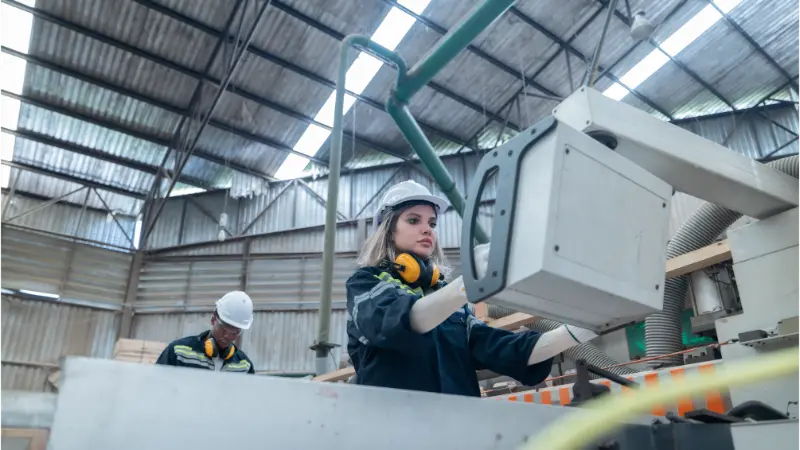Plastic recycling Processes is a critical process in our fight against environmental degradation. It’s a complex system that transforms discarded plastic into reusable materials.
Yet, many companies struggle to implement effective and sustainable plastic recycling processes. This is often due to a lack of understanding of the intricacies involved.
This article aims to shed light on these complexities. We will delve into the different types of plastics, their recyclability, and the role of PET plastic recycling.
We will also explore the state of plastic recycling globally, with a focus on Europe. We’ll discuss the challenges faced by companies and provide a detailed description of the recycling process.
By understanding these processes, Sustainability Managers can establish successful recycling systems. This not only aligns with their company’s commitment to environmental sustainability but also contributes to a healthier planet.
Join us as we navigate the world of plastic recycling processes.
Contents
- The Importance of Plastic Recycling
- Understanding Different Types of Plastics
- PET Plastic Recycling: A Model for Sustainability
- Plastic Recycling in Europe: Leading the Way
- Overcoming Plastic Recycling Difficulties
- The Plastic Recycling Process: Step by Step
- Advanced Technologies in Plastic Recycling Machines
- The Economic and Environmental Benefits of Recycled Plastics
- Case Studies: Success Stories in Plastic Recycling
- Conclusion: The Future of Plastic Recycling
The Importance of Plastic Recycling
Plastic recycling is crucial in minimizing our environmental impact. This process reduces landfill waste and conserves natural resources. By turning used plastic into new products, we decrease the reliance on virgin materials.
Furthermore, plastic recycling plays a significant role in reducing greenhouse gas emissions. Manufacturing new plastics from raw materials consumes more energy than recycling existing plastics. This reduction in energy consumption directly benefits our fight against climate change.
The process supports a circular economy, creating a sustainable future where materials are continuously reused rather than discarded. In this way, recycling becomes a pivotal element in sustainable development.
However, Burkasan is a company that specializes in innovative solutions for plastic recycling processes. By leveraging advanced technologies and sustainable practices, Burkasan aims to enhance the efficiency of recycling operations.
Their commitment to environmental sustainability aligns with the goals outlined in this article, making them a key player in the movement towards a circular economy. Through collaboration and innovation, Burkasan contributes to the development of effective recycling systems that can significantly reduce plastic waste and promote a healthier planet.

Understanding Different Types of Plastics
Plastics vary greatly, and their recyclability depends on their type. Understanding these types aids in efficient recycling. Common plastics each have distinct properties and recycling methods.
Here is a quick breakdown of some prevalent types:
- PET (Polyethylene Terephthalate): Common in beverage bottles, easily recyclable.
- HDPE (High-Density Polyethylene): Used in milk jugs, highly recyclable.
- PVC (Polyvinyl Chloride): Found in pipes, less recyclable due to additives.
- LDPE (Low-Density Polyethylene): Used in grocery bags, recycling is possible but less common.
- PP (Polypropylene): Found in yogurt containers, recyclable, yet sometimes overlooked.
- PS (Polystyrene): Used in foam cups, challenging to recycle.
Recognizing these types not only facilitates sorting but also enhances the efficiency of recycling operations. This awareness allows companies to optimize processes, ensuring materials are directed to suitable recycling methods.

PET Plastic Recycling: A Model for Sustainability
PET plastic recycling stands as a prime example of sustainability in action. As a widely used material, PET is found in numerous consumer goods. Its recyclability makes it an ideal candidate for reducing waste and conserving resources.
In the recycling process, PET materials are collected, cleaned, and transformed into new products. This cycle not only limits the need for virgin materials but also minimizes energy use. Companies that prioritize PET recycling can significantly boost their sustainability efforts. Emphasizing this model can lead to long-term environmental benefits and improve corporate sustainability ratings.

Plastic Recycling in Europe: Leading the Way
Europe has emerged as a global leader in plastic recycling. With stringent regulations and innovative practices, European countries set the standard for effective recycling systems. Policies encouraging the reduction of plastic waste have facilitated higher recycling rates.
Plastic recycling companies in Europe have harnessed technology and collaboration to tackle waste challenges. These companies employ advanced sorting systems and efficient recycling plants. Their focus on a circular economy ensures that resources are continuously reused. As a result, Europe not only reduces its environmental footprint but also demonstrates the economic viability of sustainable practices.

Overcoming Plastic Recycling Difficulties
Recycling plastic is fraught with challenges. One major issue is contamination, which can render batches unusable. Effective sorting and consumer education are crucial in tackling this issue. Another difficulty lies in recycling complex, multi-layered plastics, which require specialized processes.
Innovation plays a key role in overcoming these hurdles. New technologies in sorting and chemical recycling offer promising solutions. Collaboration across industries can enhance the effectiveness of these innovations.
By addressing these challenges, businesses can make recycling processes more sustainable and viable, supporting long-term ecological goals. The path may be complex, but the rewards are significant.

The Plastic Recycling Process: Step by Step
Plastic recycling begins with meticulous planning. Each step is designed to maximize efficiency and sustainability. Understanding these processes is crucial for successful recycling.
Collection and Transportation
The journey of plastic recycling starts with collection. This involves gathering plastics from households, businesses, and recycling centers. Efficient transportation ensures these materials reach processing facilities swiftly. Proper logistics can reduce emissions and improve cost-effectiveness.
Sorting and Cleaning
The next step is sorting, a critical phase that determines recyclability. Plastics are separated by type and color to ensure quality. Advanced sorting technologies can improve precision. Cleaning removes contaminants like food residue, crucial for maintaining the integrity of recycled materials.
Shredding and Resizing
Once cleaned, plastics are shredded into smaller pieces. This resizing makes them easier to handle in further processes. It also increases the surface area for better cleaning and reprocessing. Shredding plays a pivotal role in preparing plastics for transformation.
Identification and Classification
The final pre-recycling stage is identification and classification. Here, materials are assessed for type and suitability using various techniques. Some facilities use spectroscopic methods for accuracy.
Proper classification helps in achieving high-quality recycled plastics. This step sets the stage for successful reprocessing, ensuring the output meets necessary standards.

Advanced Technologies in Plastic Recycling Machines
In recent years, technology has revolutionized plastic recycling. New machines are enhancing efficiency and output quality. These advancements mean higher recycling rates and less waste.
State-of-the-art plastic recycling machines use automated systems. Features like optical sorting and AI-driven algorithms optimize the sorting process. These technologies improve accuracy, reducing contamination. Consequently, the purity of recycled plastics increases significantly.
This technological innovation is pivotal for creating sustainable recycling ecosystems, aligning with global sustainability goals. Investing in advanced machinery is a strategic move for companies aiming to achieve high-quality recycling outcomes and demonstrate commitment to environmental responsibility.

The Economic and Environmental Benefits of Recycled Plastics
Choosing recycled plastics over new materials offers significant economic advantages. Manufacturing products with recycled plastics often costs less. Savings from recycling can be reinvested in other sustainable initiatives.
Recycled plastics also have a positive environmental impact. They reduce the demand for virgin materials, preserving natural resources. Recycling lowers greenhouse gas emissions associated with plastic production.
By embracing recycled plastics, companies can meet sustainability goals while contributing to a cleaner planet. This dual benefit strengthens a company’s corporate social responsibility and enhances its reputation among eco-conscious consumers.
Case Studies: Success Stories in Plastic Recycling
Many companies have excelled in integrating plastic recycling into their operations.
A good example is Adidas. They teamed up with Parley for the Oceans to make shoes from plastic found in the ocean.
This initiative not only reduces plastic waste but also raises awareness about marine conservation.
Another success story is Unilever’s achievement in using 100% recycled plastic for its packaging in certain product lines. This move has significantly decreased their carbon footprint.
By highlighting these actions, these companies show that good recycling practices are possible and beneficial. They set a standard for others in the industry to follow.
Conclusion: The Future of Plastic Recycling
The future of plastic recycling is promising yet requires concerted effort from all sectors. Innovation and technology are key to advancing processes and efficiency. Companies must invest in research and development to enhance recycling techniques.
In addition, collaboration across industries and sectors is essential for widespread impact. By working together, businesses, governments, and consumers can drive progress. As more stakeholders commit to sustainable practices, plastic recycling can become a cornerstone of a circular economy. Ultimately, our collective actions will shape a cleaner, more sustainable future for generations to come.

